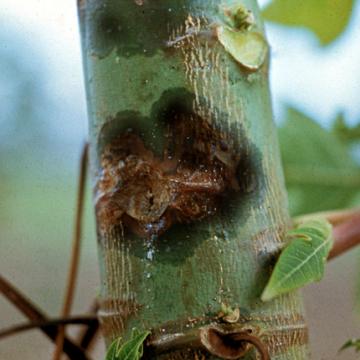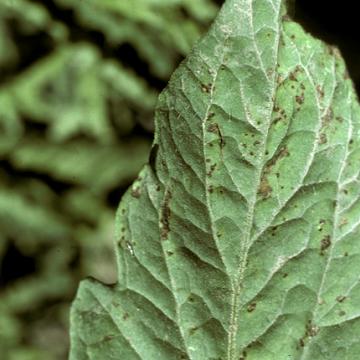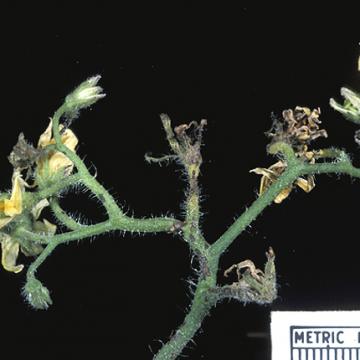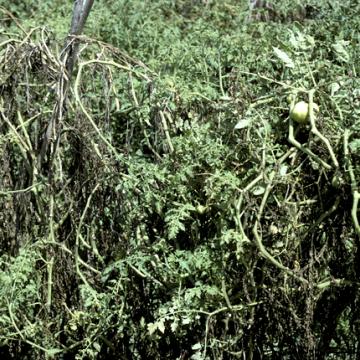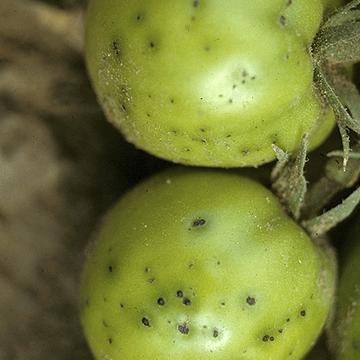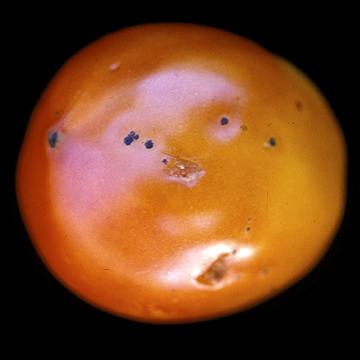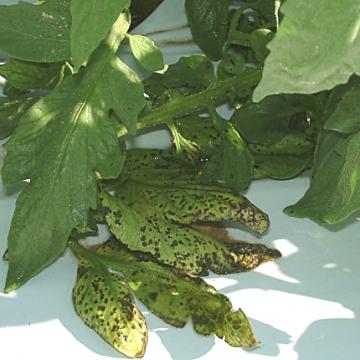DISEASE: Bacterial mushy canker
HOST: Papaya
This disease (Micronesia) differs from bacterial decline by causing blackish, water-soaked, mushy cankers near or in leaf axils or on young stems.
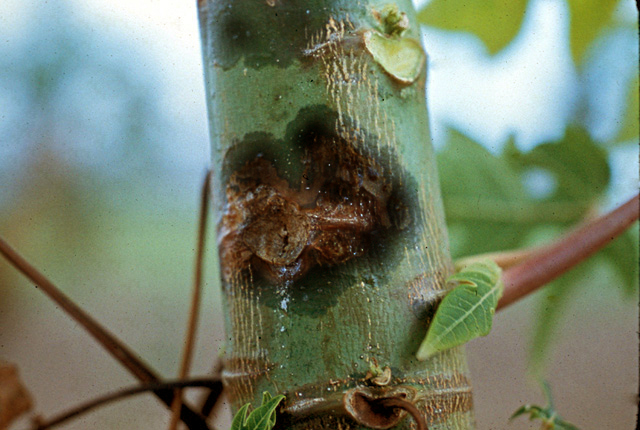
Bacterial mushy canker | Papaya
DISEASE: Bacterial mushy canker
HOST: Papaya (Carica papaya)
PATHOGEN: Erwinia sp.
SOURCE: E. Trujillo
DISEASE: Bacterial speck
HOST: Tomato
Leaf with typical brown to black lesions without halos, an early stage of disease.
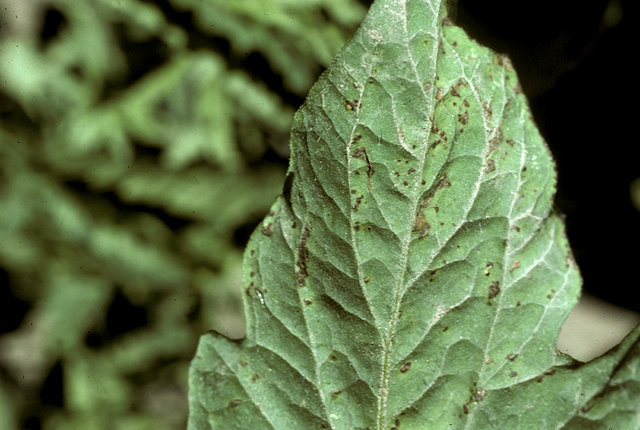
Bacterial speck | Tomato
DISEASE: Bacterial speck
HOST: Tomato (Lycopersicon esculentum)
PATHOGEN: Pseudomonas syringae pv. tomato
SOURCE: S. Thomson
DISEASE: Bacterial speck
HOST: Tomato
Leaves with spots, some surrounded by chlorotic zones.
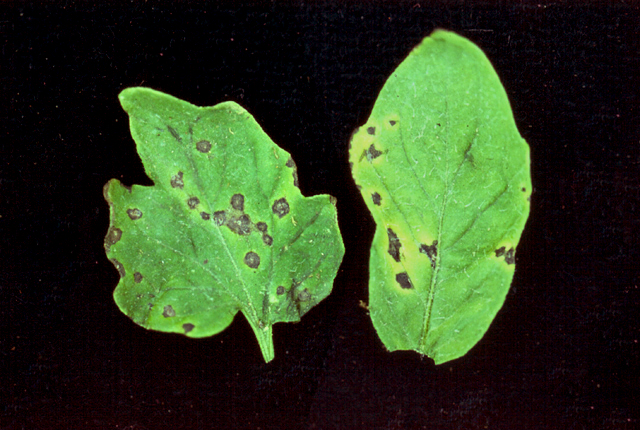
Bacterial speck | Tomato
DISEASE: Bacterial speck
HOST: Tomato (Lycopersicon esculentum)
PATHOGEN: Pseudomonas syringae pv. tomato
SOURCE: R. Gitaitis
DISEASE: Bacterial speck
HOST: Tomato
Curling leaves with large, blackish lesions. Later, yellowing occurs around lesions.
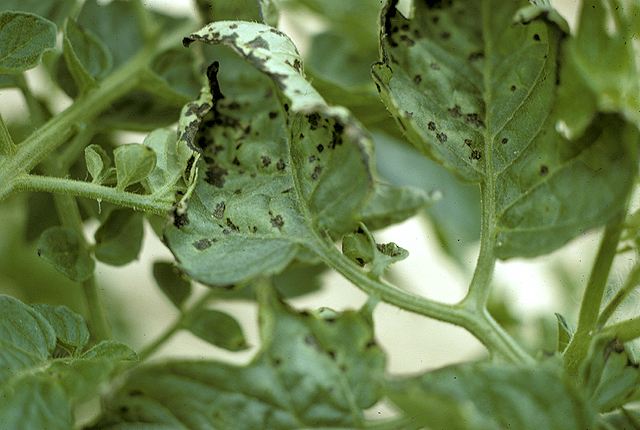
Bacterial speck | Tomato
DISEASE: Bacterial speck
HOST: Tomato (Lycopersicon esculentum)
PATHOGEN: Pseudomonas syringae pv. tomato
SOURCE: M. Schroth
DISEASE: Bacterial speck
HOST: Tomato
Infection of flowers, peduncles, and stems.
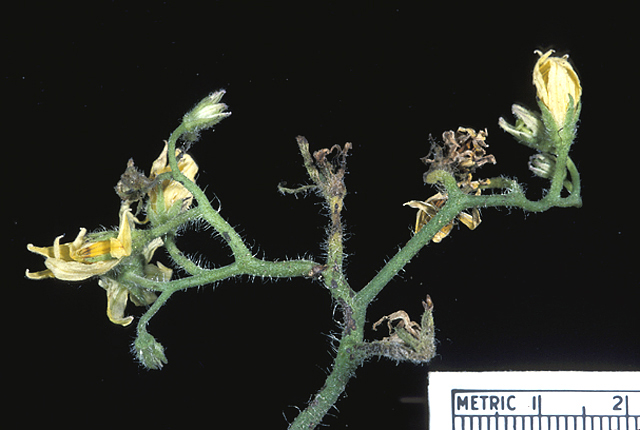
Bacterial speck | Tomato
DISEASE: Bacterial speck
HOST: Tomato (Lycopersicon esculentum)
PATHOGEN: Pseudomonas syringae pv. tomato
SOURCE: D. Cupples
DISEASE: Bacterial speck
HOST: Tomato
Field view of severely diseased plants.
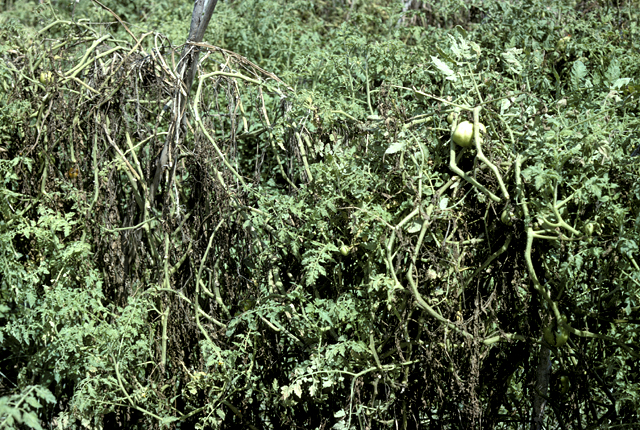
Bacterial speck | Tomato
DISEASE: Bacterial speck
HOST: Tomato (Lycopersicon esculentum)
PATHOGEN: Pseudomonas syringae pv. tomato
SOURCE: M. Schroth
DISEASE: Bacterial speck
HOST: Tomato
Green fruit with small, sunken, black lesions. Raised centers are surrounded by dark green halos.
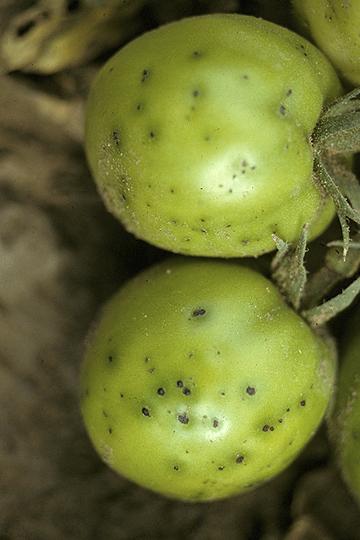
Bacterial speck | Tomato
DISEASE: Bacterial speck
HOST: Tomato (Lycopersicon esculentum)
PATHOGEN: Pseudomonas syringae pv. tomato
SOURCE: S. Thomson
DISEASE: Bacterial speck
HOST: Tomato
Ripe fruit with raised lesions.

Bacterial speck | Tomato
DISEASE: Bacterial speck
HOST: Tomato (Lycopersicon esculentum)
PATHOGEN: Pseudomonas syringae pv. tomato
SOURCE: M. Schroth
DISEASE: Bacterial spot
HOST: Tomato
Infected lower leaves with multiple necrotic spots. Bacterial spot xanthomonads are Xanthomonas euvesicatoria, X. vesicatoria, X. perforans, and X. gardneri. X. perforans is not known to infect fruit.
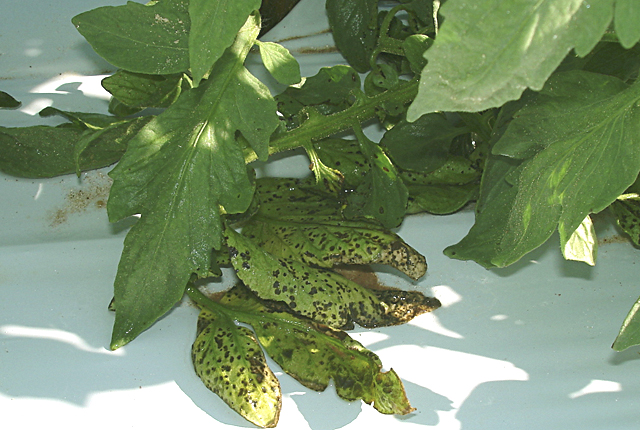
Bacterial spot | Tomato
DISEASE: Bacterial spot
HOST: Tomato (Lycopersicon esculentum)
PATHOGEN: Xanthomonas bacterial spot pathogens
PATHOGEN SYNONYM: Xanthomonas axonopodis pv. vesicatoria
SOURCE: J. Jones


